Egyptian Revival
Los Angeles in the 1920's was inundated with Spanish and Mediterranean revival style buildings, and the occasional Colonial, Dutch Colonial, and Normandy or French Eclectic. Perhaps the most unusual of the revivals and likely the shortest-lived, was the Egyptian Revival style.
While Los Angeles's most heralded examples of the Egyptian Revival style are a pair of movie houses, the Vista on Sunset and the Grauman's Egyptian on Hollywood Boulevard, the style was most commonly applied to apartment buildings (see example below on Westmoreland in Harvard Heights).
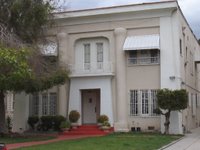
The Egyptian Revival of the 1920's is generally attributed to the sensation-creating discovery of King Tut's tomb in 1922 by archeologist Howard Carter. (Egyptian influences or Egyptomania had also penetrated western architecture in the early 1800's, inspired by Napoleon's expedition of Egypt.)
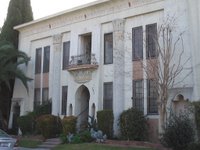 Most of these apartment buildings are Art Deco (sometimes the 20's Egyptian Revival is treated as a Deco subset) or Italianate forms onto which Egyptian columns (described as massive bundles of sticks tied together at the top and bottom and flared at the top) have been imposed.
Most of these apartment buildings are Art Deco (sometimes the 20's Egyptian Revival is treated as a Deco subset) or Italianate forms onto which Egyptian columns (described as massive bundles of sticks tied together at the top and bottom and flared at the top) have been imposed.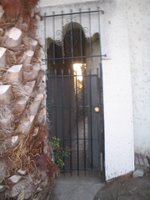
Developer-builder-architect J.M. Close was responsible for this building at 737 Wilcox, as well as other Egypto-follies nearby: the Karnak apartments at 5617 La Mirada and the Ahmed apartments at 5616 Lexington. All three were built between 1925-26.
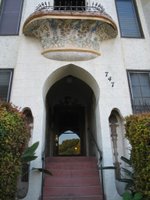
The entrance to the breezeways, through sarcophogai, is especially impressive and who would be without the faux hieroglyphics?
Another enthralling Egyptian Revival structure, the Samson Tyre and Rubber Company Building (now more popularly known at the Citadel outlet mall), was designed by the architecural firm Morgan, Walls, and Clements in 1929-30. An industrial workplace, its fortifications were modeled after the ancient walled city of Khorsabad, the fourth capital of the Kingdom of Assyria. (The Oriental Institute renewed excavations of Khorsabad, about 10 miles North of modern day Mosul in 1928.)
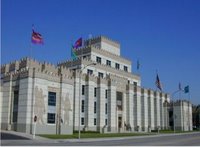
The Osiris apartment building, in Westlake on Union, also erected by architect J.M. Close, features a striking alternation of window size, a colonnaded frontispiece, and a pylon style facade (similar to the Grauman's courtyard). Close reporteldy also contributed to the marketing of many of his buildings, encouraging prospective buyers to "pyramid your dollars."
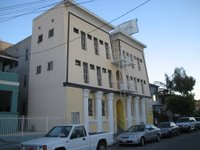
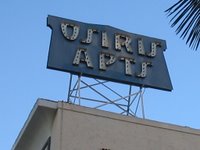
Osiris is the Egyptian god of life, death, and fertility.
The Egyptian Revival of late '90's Las Vegas is generally credited to brain cramp.
Labels: Architecture

<< Home